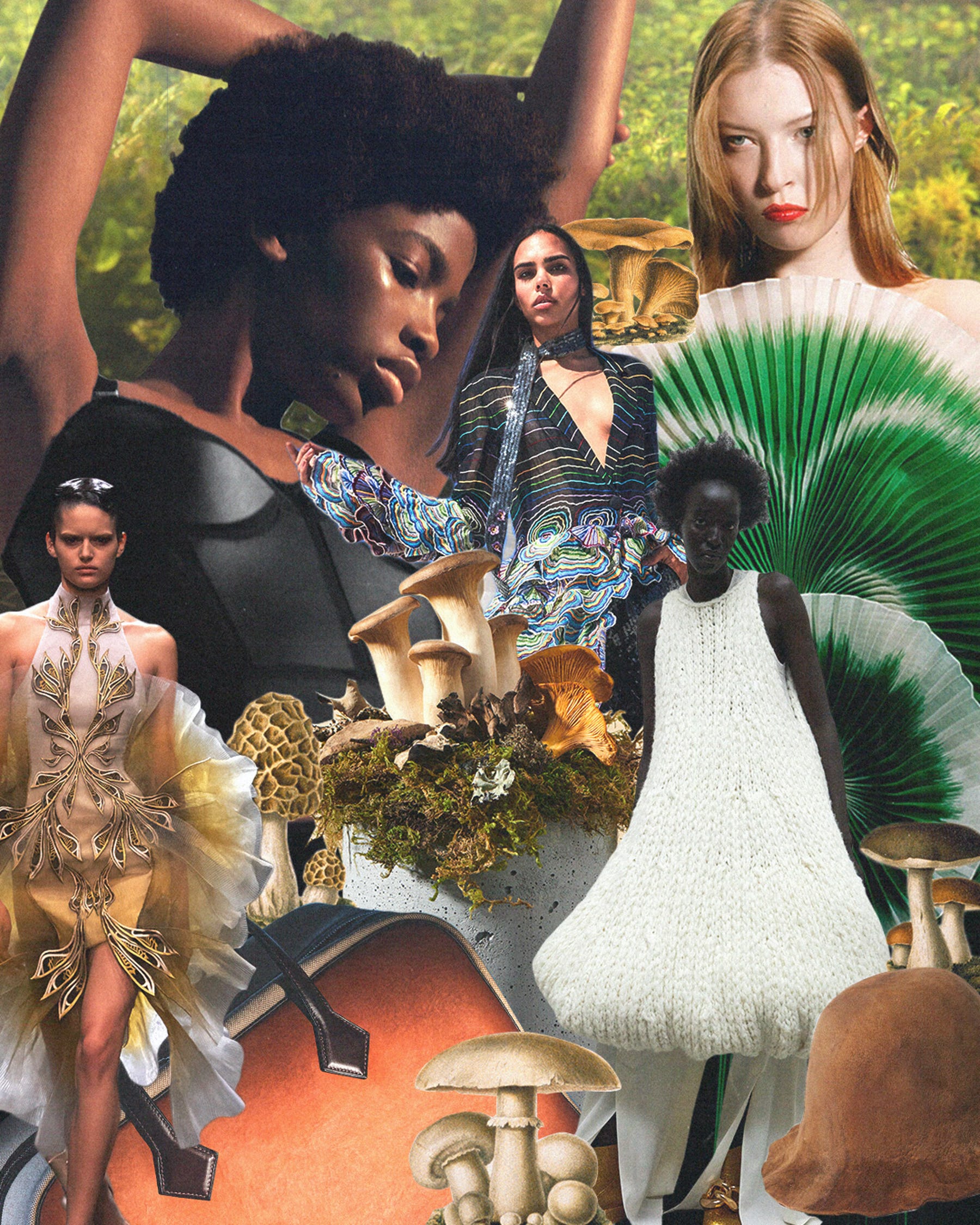
For hundreds of years, many industries have relied on petroleum, or traditional animal source products. Switching to consumer goods made out of vegan “leather”—a textile that is usually manufactured from polyurethane or polyvinyl acetate—was a quick fix with a low cost, but studies have shown that these synthetic substitutions can still be harmful to the environment. No matter how you dress it up, plastic is still plastic, which means biodegradable products of this kind will outlive us in a landfill.
Mycelium leather is considered a better option because of the low-energy manufacturing and biodegradability aspects. (The roots can be grown on sawdust and other byproducts as opposed to acres of land which has less of an environmental impact.) On the other hand, it’s still so new that nobody really knows what the long-term durability of mycelium products looks like yet.
The recent push toward sustainability has caused a major shift in the fashion industry, a reckoning that has been long overdue considering the increased demand for more eco-friendly ethics and standards. As Intersectional Environmentalist founder Leah Thomas explained in a Twitter thread, there are so many nuances within the sustainable fashion space because it’s still in transition. But the demand for sustainability, human health, and animal welfare is growing exponentially. Given that mushrooms operate as a natural recycling system, mycelium (the fuzzy, fibrous feeding network that helps fungi grow) serves as a multi-functional option for more mindful packaging as seen with companies like Ecovative Design and their suite of biodegradable alternatives. The next step involves introducing mycelium “leather” goods to the commercial market, as demonstrated this year by Stella McCartney and Hermès.
For hundreds of years, many industries have relied on petroleum, or traditional animal source products. Switching to consumer goods made out of vegan “leather”—a textile that is usually manufactured from polyurethane or polyvinyl acetate—was a quick fix with a low cost, but studies have shown that these synthetic substitutions can still be harmful to the environment. No matter how you dress it up, plastic is still plastic, which means biodegradable products of this kind will outlive us in a landfill.
Mycelium leather is considered a better option because of the low-energy manufacturing and biodegradability aspects. (The roots can be grown on sawdust and other byproducts as opposed to acres of land which has less of an environmental impact.) On the other hand, it’s still so new that nobody really knows what the long-term durability of mycelium products looks like yet.
Companies like Bolt Threads, which has been at the forefront of biotechnological innovation since 2009, have also entered the mushroom fashion fold. When Dan Widmaier, CEO of Bolt Threads, noticed the fashion industry was underserved as far as consumer products were concerned, he made sure the company’s mission involved bringing in new materials to fix problems in our consumer marketplace by looking to nature first. He likes to credit Mother Nature for “giving us a four-billion-year working example of a perfectly circular materials economy.”
The company debuted their foray into luxury fashion in 2017 when presented with the opportunity to partner with McCartney to create a dress made out of Microsilk (silk proteins spun by spiders), which was later displayed at the Museum of Modern Art. From there, Bolt Threads expanded into the production of mycelium as a material with leather alternative Mylo, followed by a consortium including Stella McCartney, Adidas, Lululemon, and Kering.
Full article on W Magzine
